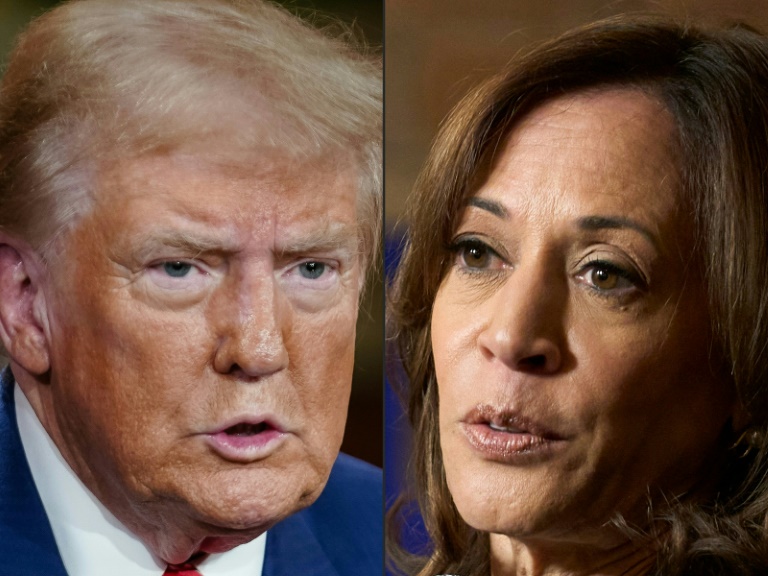The United States’ challenge is that there will be neither an unbreakable Sino-Russian alliance nor a Sino-Russian split that the United States could provoke.
The failure of the Western strategy of Wandel durch Handel (German for “change through trade” with authoritarian powers) has led some political analysts to seize on engineering a second Sino-Soviet split in order to bring the Russian wolf back into the fold. For all Russia’s wrongs, they believe that Moscow distracts us from the real problem—Beijing—so they conclude that it would be better to cut a deal that pries Russia from its Chinese ally and frees American resources to counter the China challenge.
While Russia does chafe at its dependence on China, that does not make Russia ripe for picking. The seductiveness of a grand bargain belies several realities: the United States cannot pry Russia from China, the United States will not then “pivot to Asia” with freed-up resources, and those resources would be insufficient to deter or out-compete China. In the long run, this “reverse Nixon” strategy would only strengthen Russia and reflect a fundamental misunderstanding about the nature of the relationship between authoritarian regimes.
1) The United States Cannot Split Russia from China.
No “grand bargain” would pull Russia out of China’s orbit even if Putin accedes to such a pact. Not only is Putin uninterested in peaceful coexistence with Ukraine, but he would also have no compunction about cheating on whatever terms he agreed to. Russia has every incentive to do so.
While some of the Russian-Chinese trade agreements in food (e.g., wheat) and energy (oil, gas, coal) are more apparent than real or face future challenges, the long border between the two countries is conducive to connective infrastructure that will facilitate future trade. Additionally, China is Russia’s largest supplier of dual-use products that the United States and its allies have deemed “high priority” for Russian weapons production (e.g., semiconductors, telecoms equipment, machine tools), helping Russia bypass sanctions by exporting over $300 million per month of these controlled products.
Dual-use products now comprise two-thirds of China’s total exports to Russia, which have more than doubled since the Ukraine invasion and exceeded $80 billion in 2024. In 2023, 89 percent of Russia’s high-priority weapons parts came from China, and Chinese shipments of CNC machine tools and components to Russia, often via indirect routes, continue to increase.
With such a “grand bargain,” Russia would no longer need China to help it evade sanctions, at the price of restricting its dealings with China. But why would Russia not have its cake and eat it, too? Russia could agree to a deal, get sanctions against it dropped and its central bank assets unfrozen, and continue dealing with China. Prohibiting it from doing so would be unenforceable.
2) There Is No Pivot to Asia.
Even if a diminished Russian threat frees American resources from the European theater, the United States will not then finally “pivot to Asia.” For historical reasons and for better or worse, the United States’ heart is with Europe, and if the United States wanted to orient toward Asia, it would have done so already.
The Trump administration wants the Russian invasion to end not because it plans to focus on Asia but rather because it is tired of supporting Ukraine’s war effort and European free-riding under the U.S. security umbrella. But if Washington wanted NATO’s European members to contribute more to collective security, there are better—albeit more difficult—ways of doing so that would not simultaneously destroy its own international credibility.
The administration has not yet articulated a strategic vision for focusing on China instead, which would also require significant allied support and coordination. While it has proponents within for an Indo-Pacific pivot, their influence could be limited not only by rivals who seek a negotiated settlement with China (similar to that with Russia) but also by Congress, which must be persuaded to re-appropriate funds specifically to the Indo-Pacific region.
3) Competition with China Requires More
Moreover, additional resources reallocated from Ukraine or Europe will not be nearly enough to deter China from invading Taiwan, expanding its encroachment into the South China Sea, or threatening its neighbors and U.S. regional partners and allies.
First, the savings would be much less than it would seem because the majority of funds sent to Ukraine since 2022 have paid the U.S. defense industry, government agencies, and the military.
Secondly, competing with and “winning” against China—whatever that means to this administration—will take much more than what the United States is spending on Ukraine beyond merely more military resources. Prevailing in “great power competition” requires a strategic vision, including future military force design and a comprehensive, integrated, whole-of-government effort not achieved by money alone.
Sowing the Seeds of Russia’s Revival
A successful “reverse Nixon” strategy sees Russia ending its Ukraine war in exchange for lifted sanctions, freed foreign capital, and otherwise rejoining polite international society. In return, the United States could turn its attention to the Indo-Pacific. As a result, China would be sufficiently contained to its immediate neighborhood, and the international order largely unchanged.
These short-term gains would create long-term risk. They would only allow Russia to get stronger and re-emerge as a more serious threat in the future while not having done enough to hinder China.
The role of Kissinger and Nixon’s 1972 diplomatic coup with China in the Sino-Soviet split has been exaggerated. They did not engineer the split but took advantage of it.
The long-term effects of that US-China rapprochement should also give pause. The seismic diplomatic shift placed pressure on the USSR and helped push the Soviets to the SALT bargaining table. However, it is less clear that prying China from the Soviet Union quickened the latter’s demise, as the Soviet economy was already in disarray by the early 1960s.
Furthermore, opening China’s economy to the world reaped enormous economic, societal, and humanitarian benefits. Between 1978 and 2019, 800 million people rose above the poverty level while enjoying significant knock-on improvements in infant mortality and life expectancy—but it also helped set it on the path to becoming the United States’ major strategic competitor today.
If one were looking for lessons from Nixon in China, then the “reverse Nixon” needs to finish the comparison. Ceding parts of Ukraine, lifting sanctions, and unfreezing Moscow’s foreign capital assets will strengthen Russia for future strategic competition to the detriment of U.S. interests.
Unlike China in the 1970s, Russia is facing a demographic decline and other long-term impacts on the national power, so it may lack the potential for long-term ascension that China possessed a half-century ago. Be that as it may, Russia’s nuclear and maritime capabilities still pose a growing threat, even in its present condition.
Similar Projects, Shared Enemies
There is a dangerous conceit in thinking that the United States can manipulate the geopolitical landscape of great power competition so easily. Other actors can also think and behave strategically, and it would be simple-minded to assume that others would be so simple-minded in crafting responses to American strategy.
In the unlikely event that Russia is willing to roll back economic and diplomatic ties with China, China will not give up Russia so easily; China likes having its own Saudi Arabia, and it may need Russia’s network of ports and fueling stations, among other things, down the line as it continues expanding its global reach. China has an interest in maintaining a stable strategic partner in Russia, and a “reverse Nixon” does not account for that dimension of the U.S.-China competition.
Certainly, the Russia-China friendship is not limitless, regardless of their joint statement, and they can be pried apart. There are limits to what China will do either to curtail or bail out Russia, given its own interests, which is why China has been careful about adhering to the letter of the sanctions despite grossly violating their spirit. Dictators, whatever their commonalities, do not have shared values or shared projects with each other—they only have shared enemies.
This, however, is a double-edged sword. Once upon a time, Russia and China had natural ideological affinities when they were both communist powers. This came with a certain ideology and worldview. Yet, the USSR collapsed, and China hardly makes an effort to spread the gospel of Marxism-Leninism anymore. Authoritarian rulers may have the same projects and ends, but they do not share projects and ends. In other words, they may have the same goal, but the goal’s content does not apply to each party in the same or compatible way. Often, the objective can only be achieved at others’ expense.
The United States’ challenge is that there will be neither an unbreakable Sino-Russian alliance nor a Sino-Russian split that the United States could provoke. Their relationship will wax and wane largely according to their own dynamics, with the United States working at the margins. This is understandably frustrating to American policymakers, who want the Sino-Russian relationship to be one thing or the other—not uncertain and ambiguous.
Despite its weaknesses, Russia will threaten Europe again in some way because it cannot share values and projects with liberal democracies. Even with ad hoc and sustained cooperation on various issues, as during the Cold War, its long-term interests will inevitably conflict with those of liberal democracies, as it does now because every society’s domestic values inform and are partially projected into its international policy and actions.
Of course, another way to neutralize the current Russian threat is to follow its vision of international anarchy and view expansionist authoritarianism not as threatening but rather as something to emulate—the current administration appears to be heading in that direction.
Perhaps the United States is thinking of leaving Europe to Russia’s mercy, in which case Trump is planning not to pivot to Asia but rather to retrench within, which would be consistent with his recent economic tariff decisions. Withdrawing into Fortress America might be the worst-case scenario. The United States would only hurt itself economically and expose itself militarily, as it cannot insulate itself against the world indefinitely.
However barren or bountiful one believes that geopolitical landscape might be, it will not spare the United States from future confrontation with Russia. Because authoritarian systems cannot share values or projects, they ultimately and inevitably seek conflict with each other as well.
About the Author: Yvonne Chiu
Yvonne Chiu is a Jeane Kirkpatrick Fellow at the American Enterprise Institute and Associate Professor of Strategy & Policy at the U.S. Naval War College. She is the author of Conspiring with the Enemy: The Ethic of Cooperation in Warfare. Before joining AEI, Dr. Chiu was a fellow with the Hoover Institution at Stanford University and a scholar at the Liberty Fund. She was previously a visiting scholar at the Goldman School of Public Policy at the University of California, Berkeley. Dr. Chiu has also been a member of the Institute for Advanced Study and an assistant professor at the University of Hong Kong. Her views are her own and do not represent anyone else’s.
Image: Plavi011 / Shutterstock.com.














